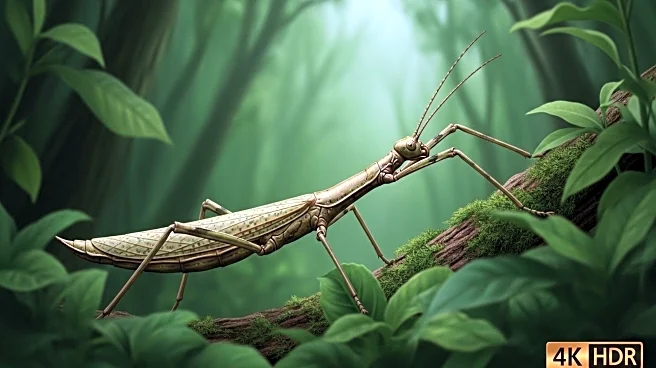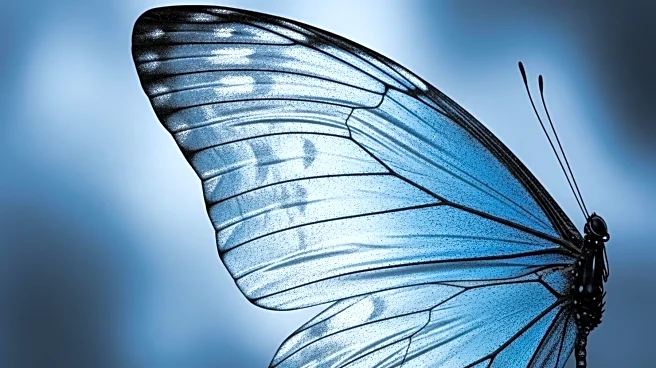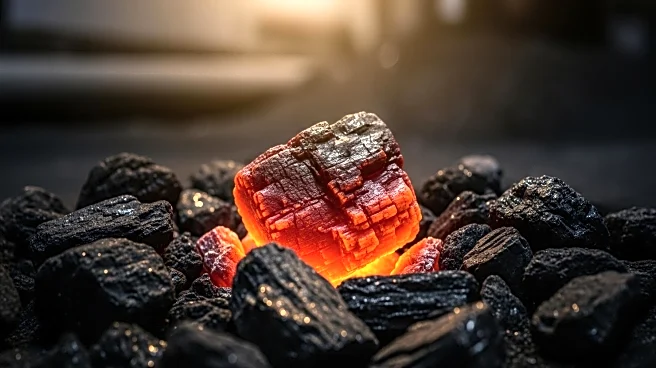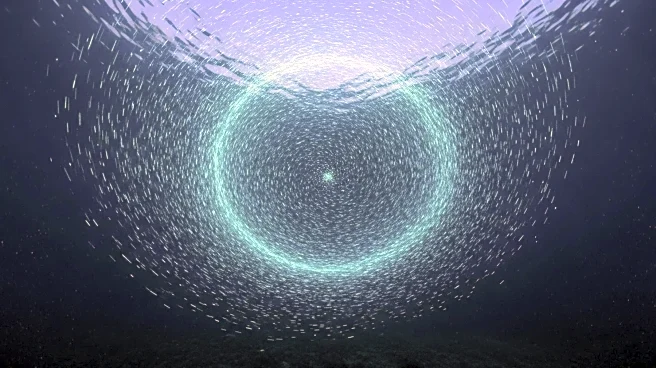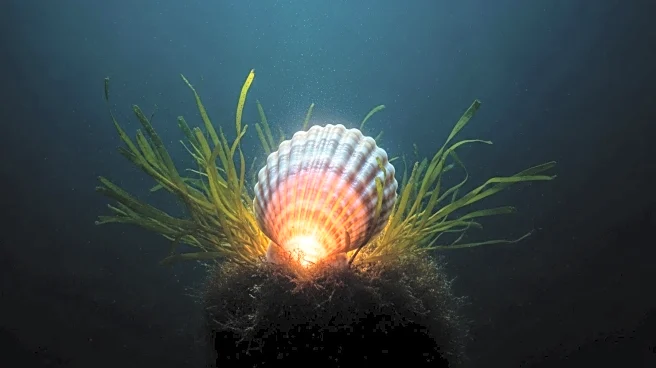What is the story about?
What's Happening?
A new species of stick insect, Acrophylla alta, has been discovered in the rainforest canopy of north Queensland, Australia. This insect, notable for its large size, measures approximately 15.75 inches in length and weighs around 1.6 ounces. The discovery was made by a team led by Angus Emmott from James Cook University, who identified the species through its unique egg patterns. The insect's habitat in the high-altitude rainforest provides a cool and wet environment, which may contribute to its large body mass. The discovery underscores the importance of canopy research in uncovering hidden biodiversity.
Why It's Important?
The discovery of Acrophylla alta is significant as it highlights the rich biodiversity that exists in the rainforest canopies, which are often underexplored due to their inaccessibility. This finding emphasizes the need for continued research and conservation efforts in these ecosystems, which are threatened by climate change and habitat destruction. The presence of such unique species also underscores the ecological importance of these habitats in maintaining biodiversity and supporting various ecological functions such as pollination and nutrient cycling.
What's Next?
Further research is needed to understand the full life cycle of Acrophylla alta, particularly the characteristics of the male, which has yet to be documented. Scientists are also interested in mapping the distribution of this species to determine its range and assess its conservation status. The discovery encourages more comprehensive surveys of rainforest canopies, potentially leading to the identification of more undiscovered species.
Beyond the Headlines
The discovery of Acrophylla alta also raises questions about the evolutionary adaptations of insects in high-altitude environments. The large size of the insect may be an adaptation to the cooler temperatures and limited food availability in its habitat. This finding contributes to the broader understanding of how species adapt to their environments and the role of physical traits in survival and reproduction.
AI Generated Content
Do you find this article useful?
